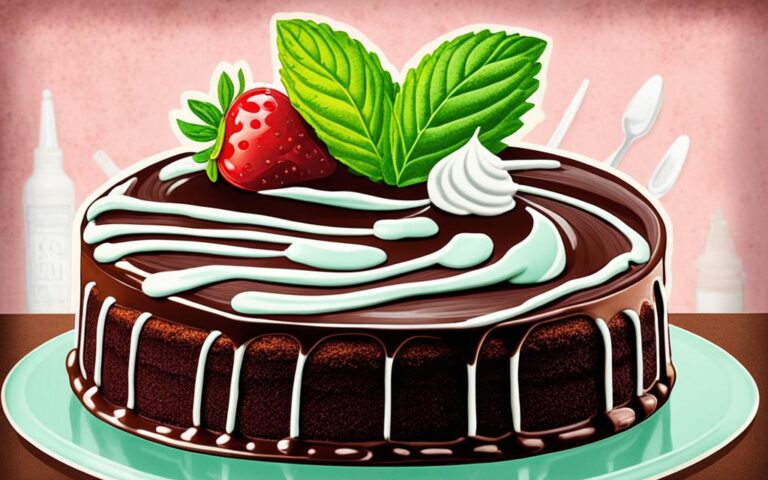Classic Design: Traditional Wall Scones Recipe
Views: 4
Discover the timeless charm of traditional wall scones with our classic recipe. If you’re new or experienced in baking, these Scottish scones are simple to make. Their flaky texture is irresistible. They pair perfectly with tea or coffee, balancing flavors beautifully.
These scones stand out for their adaptability. Add chips or fruits to match your tastes. Their crumbly yet tender texture shows the care in choosing ingredients and measurements.
Lemon zest enhances the strawberry jam’s sweetness, offering a stunning flavor. With ingredients like milk, egg, flour, baking powder, salt, butter, and sugar, you make scones that hint at Scottish teahouses.
Start by heating your oven to 400°F. Mix the wet and dry ingredients separately, then combine them. Gently mix the dough, avoiding over-kneading. Aim for no more than 12 kneads to keep them light.
Shape the dough into wedges and brush with milk for a golden look. Bake for 20-25 minutes until they’re golden brown.
Let the scones cool a bit, then enjoy them with strawberry jam. The warm scones with the tangy jam are perfect together.
Don’t wait any longer. Try this delicious recipe and enjoy the classic, timeless appeal of traditional wall scones. Your taste buds will be grateful!
Tips for Making Authentic English Buttermilk Scones
For delicious English Buttermilk Scones, quality ingredients and gentle dough handling are crucial. Buttermilk adds a tangy taste, making scones tender and flaky. Cream brings in a rich and dense feel.
Buttermilk has lactic acid, which makes the scones soft and helps them rise. If you’re out of buttermilk, mix milk with lemon juice or vinegar to replace it.
Ready to start? You’ll need flour, sugar, cream of tartar, baking soda, salt, and either sour cream or buttermilk. Also, heat up an electric skillet or cast iron pan early on.
Mix the dry stuff together well. Then cut the cold butter into it until it looks like coarse crumbs. This makes your scones flaky.
Add buttermilk or sour cream slowly, mixing until it’s just wet. Don’t overdo it, or the scones will be too dense. Afterward, gently knead the dough into a smooth ball.
Shape the dough into a circle and then into wedges. Or, use a round cutter for individual scones. Put them on a baking sheet or in the skillet.
Bake in a hot oven until they’re golden brown, about 15-20 minutes. Watch them closely so they don’t overbake.
Once baked, enjoy your scones warm with clotted cream and strawberry jam. This pairing is fantastic with the scones’ texture and taste.
Follow these steps and use the right stuff, and you’ll make tasty English buttermilk scones.
Buttermilk vs Cream: What’s the Difference?
Choosing between buttermilk and cream affects scone texture and taste. Buttermilk makes them tender and flaky. Its lactic acid tenderizes and helps scones rise.
Cream, however, makes scones rich and dense. It leads to a velvety texture. The choice between buttermilk’s tanginess or cream’s richness is up to you.
Yet, buttermilk is the traditional pick for English scones. It adds the classic flavor and texture these treats are known for.
Gluten-Free Scones Recipe for Dietary Restrictions
Are you searching for a tasty alternative to classic scones that fits dietary needs? Our gluten-free scones recipe is ideal for those avoiding gluten or wheat.
This recipe uses gluten-free pastry flour and other gluten-free components for flavourful scones. You’ll need 10 tablespoons of unsalted butter, 1 cup of all-purpose flour, 3 eggs, and ⅔ cup of sugar. Baking powder, baking soda, salt, xanthan gum, and your preferred nuts or dried fruit are also included. Swap cream for coconut cream to make it dairy-free.
To prepare, mix the dry ingredients and blend in the cold butter. Add the wet ingredients, then knead the dough until sticky yet smooth. Shape the dough, cut into wedges, and brush with cream. Bake until they’re golden brown.
Our gluten-free scones ensure those with dietary restrictions don’t miss out on taste. Treat yourself or share with loved ones. These scones are a wonderful, simple-to-make choice for everyone!
FAQ
What makes a traditional wall scone recipe?
A traditional wall scone recipe is known for its flaky texture. It uses Scottish ingredients like all-purpose flour, baking powder, and unsalted butter. You also need salt and sugar to complete the mix.
What are some tips for making authentic English buttermilk scones?
For authentic English buttermilk scones, choose high-quality ingredients. Handle the dough with care. Buttermilk makes the scones tender and tangy, while cream adds richness.
What can be used as a substitute for buttermilk in scone recipes?
If buttermilk is not available, mix milk with lemon juice or vinegar. This mix provides a tangy taste and proper texture to scones.
How can I make gluten-free scones?
To bake gluten-free scones, use gluten-free pastry flour and other suitable ingredients. Include baking powder, baking soda, and xanthan gum. Add nuts or dried fruit, and cream or coconut cream. You may also use zest. Mix well to form a dough, then shape into scones.
Can the scone recipe be customized for dietary restrictions?
Yes, you can tailor the scone recipe for specific dietary needs. The gluten-free version suits those avoiding wheat. There are also dairy-free variants for those who avoid lactose or dairy.
















